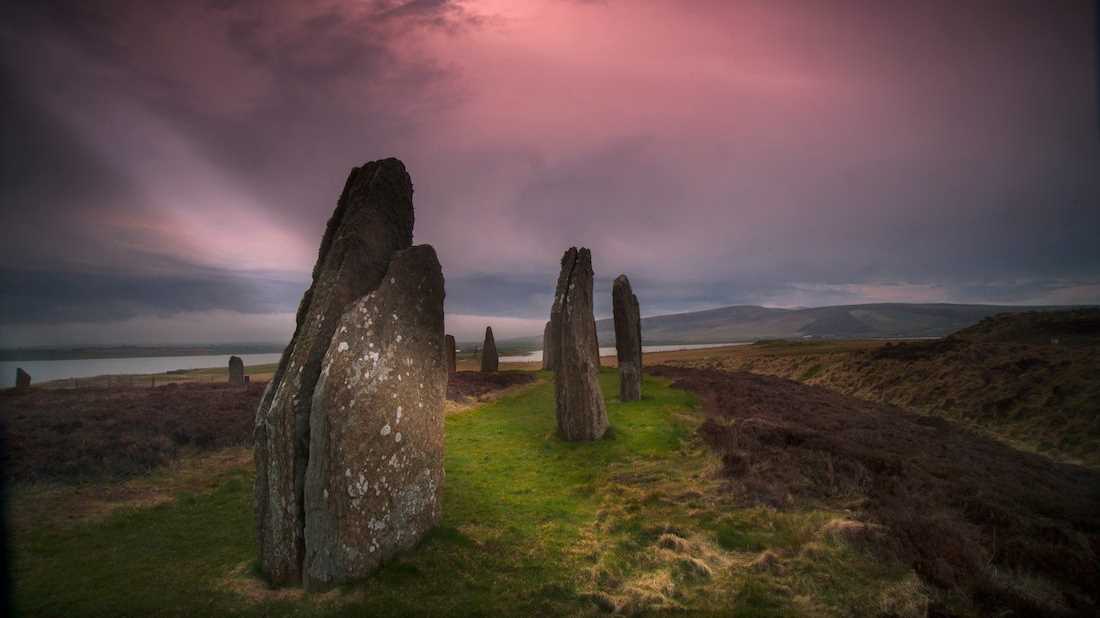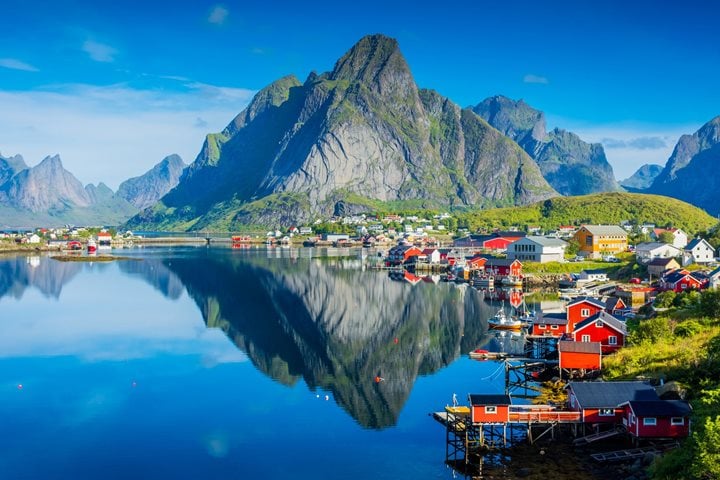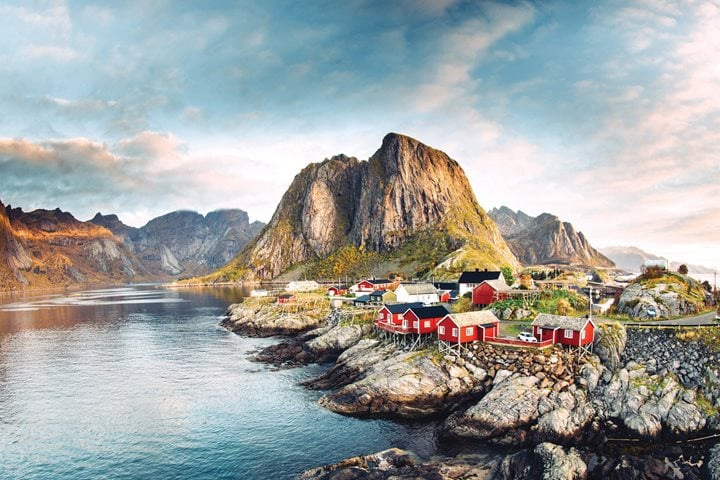It is easy to see why the ancient peoples of Europe attributed the things they didn't understand about the natural, ever-changing world to the activities and power of Otherworld beings.
Get Inspired by Photos, Videos, Webinars, Stories, and Exclusive Offers.
Sign Up
Similarly, the remains of stone-built prehistoric monuments that pepper Europe’s landscapes became embroidered into folklore narratives and tales. Their construction was assigned to long-vanished ancient invaders, giants, and a wide spectrum of other denizens of that close, yet invisible world, a special place sensed rather than seen. To this day these same monuments are still imbued with mystery, an enduring legacy of our collective cultural past.
Scotland's Sacred Standing Stones
One of the most impressive of these prehistoric sites is the Ring of Brodgar, located on Mainland, in the Orkney Islands, Scotland. It is a type of field monument known as a henge, the characteristic components of which are a circular platform defined by a ditch and an outer bank. The builders quarried over 10 feet down into the local bedrock during the construction of the 30-foot-wide enclosing ditch. Individual standing stones were set into deep sockets at intervals on its circumference, forming a huge stone circle. Only 36 of the original 60 stones remain, each with a distinctive angled top edge. Access to the 300-foot platform was via two causeways at either end.
Explore Scotland's Stone Age Sites on
Exploring Scotland’s Wild Isles: Shetlands, Orkneys & Inner Hebrides >
and Norwegian Fjords & Scottish Isles >
Built with the labor of the entire community sometime between 2,600 and 2,400 B.C., the Ring of Brodgar is an outstanding monument which both captivates and stimulates the imagination. It indicates the consummate skills in planning, administration, and engineering that these early prehistoric communities commanded. In recognition of its international importance to world heritage, the Ring of Brodgar, along with several other contemporary Neolithic–Bronze Age sites on Mainland, Orkney, were designated as a UNESCO World Heritage Site in 1999. Until this structure is scientifically excavated, the rich soil of Orkney will continue to harbor its secrets.
In the Footsteps of Saints & Kings on Iona
A couple of centuries following the library's destruction, an Irish monk called St. Columba, accompanied by a cohort of fellow Christian clerics, founded a small monastery in 563 A.D. on the picturesque island of Iona. Lying off the southwest coast of Scotland, it is one of the most culturally textured, multi-period sites in Europe. It is a place which exudes an essence of calm and peace, which explains its popularity with modern-day pilgrims who come in numbers to meditate, venerate, and contemplate profound possibilities.
Over time, St. Columba’s monastery metamorphized into a powerhouse of education and art, a mini-scale version of the Alexandrian model. Sacred texts were written by the monks on vellum in a special workshop known as a scriptorium. The Book of Kells is thought by many scholars to have been compiled at Iona and is regarded by many as the most sumptuous expression of the art of manuscript illumination in existence. It is now housed in the main library of Trinity College, Dublin.
Later medieval buildings now occupy the site of the original monastery. One of the most captivating of its features is the cobbled medieval ‘Street of the Dead,’ along which bodies were carried from the Abbey Church to their final resting place in the graveyard known locally as Relig Odhráin. Stemming from its pious reputation, a belief developed that the sacred soil of Iona had inherent soul-cleansing properties. As a result, numerous kings, warlords, and chieftains, all of whom boasted murderous and bloody careers, ensured that their mortal remains would be interred in Iona and thus guarantee their unhindered entry into Heaven. That belief is still widely held to this day.
Explore Iona on Exploring Scotland’s Wild Isles: Shetlands, Orkneys & Inner Hebrides >
The Enduring Legend of Loch Ness
In the 7th century the abbot of Iona, Adomnán, wrote his biography Life of Columba. Very interestingly, this work includes the earliest written reference to the world-famed Loch Ness monster. The lake, or loch as they say in Scotland, stretches 23 miles in length and reaches depths of almost 800 feet. Gazing on this wide expanse of steel-blue water, it is easy to conjure up images of an impressive antediluvian beast lurking below the surface.
Discover Loch Ness on Scotland's Highlands & Islands >
In 565 A.D. St. Columba had heard accounts of a strange beast residing in Loch Ness that had been on a killing spree and he decided to see for himself. As luck would have it, St. Columba arrived just in the nick of time to save a man who was being attacked by the creature. He ordered the beast in the name of God to sink beneath the waters of the loch where, according to local tradition, it has remained to this day, fearful of divine retribution should it venture to poke its head above the surface. Numerous sightings have been reported over the years, but despite several scientific investigations this famous lacustrine monster remains elusive.
On our expertly curated coastal European voyages you'll get up close with these near-mythic places and delve into their beguiling histories with help from our knowledgeable and passionate expedition team.




